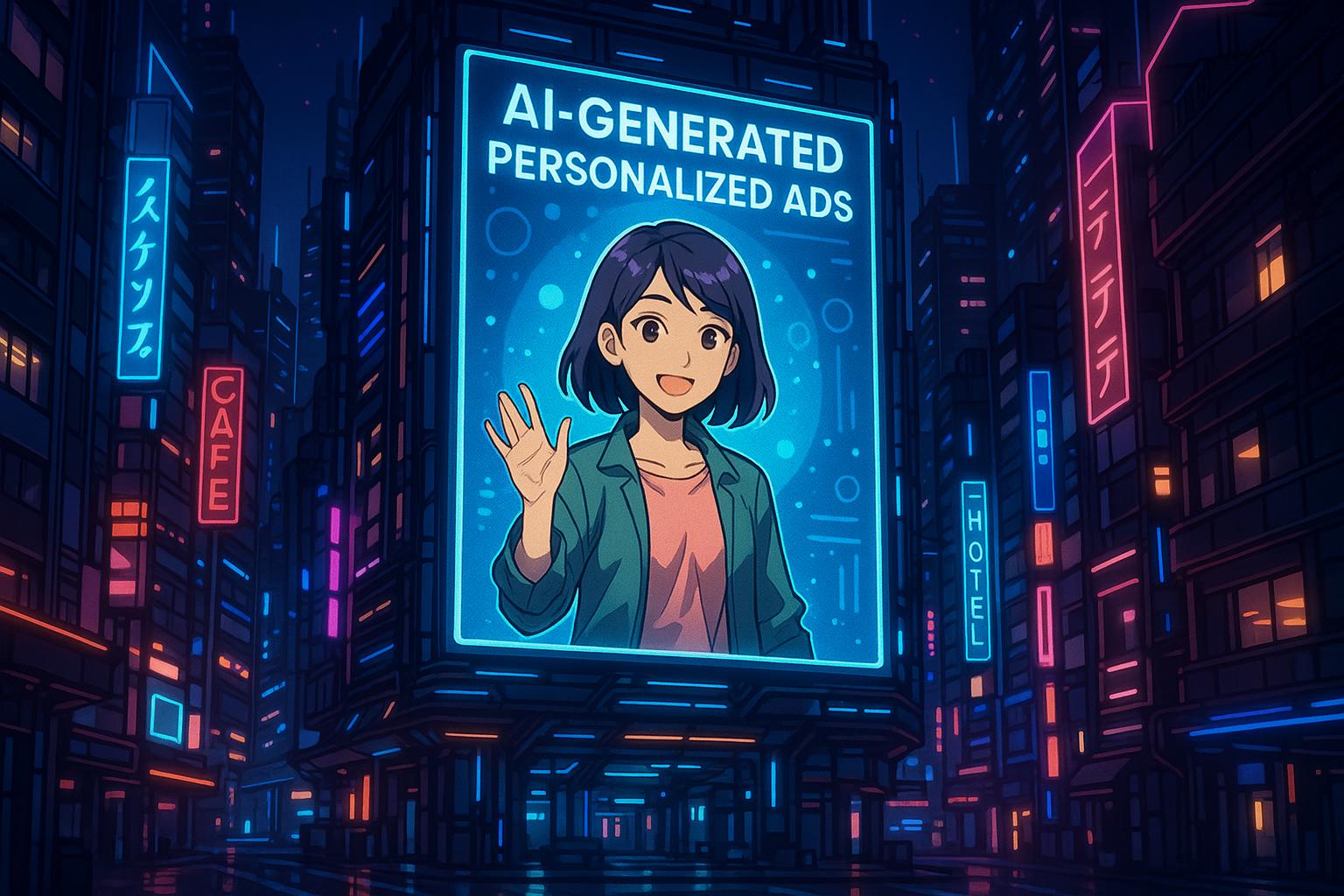The advertising landscape is undergoing a profound transformation, driven by the capabilities of generative artificial intelligence (AI). Andrew Newman, CEO of DOOH.com, envisions a future where brands harness this technology to create out-of-home (OOH) advertisements that can be tailored in real-time to resonate with specific audiences. This leap in creative production not only represents a paradigm shift in how advertising is conceived and delivered, but it could redefine the very essence of OOH marketing.
Historically, OOH advertising has operated as a one-to-many medium, relying on static, broadly targeted messages. The advent of digital screens and connected inventories has, however, allowed for significant advancements, leading to greater flexibility in messaging. As industries evolve, the need for hyper-contextualisation becomes apparent. According to Newman, generative AI has the potential to facilitate real-time optimisation of creatives based on an array of factors, including time, weather, and even social conversation.
This sentiment is echoed across the industry, with various firms leveraging AI technologies to enhance advertising effectiveness. For instance, the Brandtech Group, a burgeoning player in the AI advertising sector, recently secured a valuation of $4 billion following substantial investment aimed at disrupting traditional marketing models. Their generative AI platform, Pencil, accelerates ad creation while enhancing performance, making marketing faster and more economical. Founder David Jones asserts that, despite apprehensions regarding job displacement, the technology will ultimately benefit the marketing landscape.
In a similar vein, WPP's collaboration with Nvidia aims to integrate generative AI into advertising workflows. As per GroupM, nearly half of today's global advertising employs some AI capabilities. This partnership signals a broader trend toward the incorporation of AI in creative processes, promising unique images and videos that respond dynamically to contextual inputs.
The integration of generative AI not only allows for creative optimisation but also heralds a new era of personalised engagement in advertising. Intersection, an OOH media company, recently launched Generative AI Integrations, which focus on localisation and personalisation. This strategy allows brands to craft campaigns tailored not just to demographic data but to specific neighbourhood characteristics, significantly enhancing consumer connections.
One of the most intriguing examples of potential AI application can be seen in Nike's upcoming campaign for the Air Terra sneakers. Newman imagines a scenario where AI systems work in concert to generate bespoke messaging reflective of real-time variables at each digital display — from foot traffic to social media sentiment. This creates an exceptionally dynamic campaign where no two billboards would convey the same message, resulting in a more immersive and engaging experience for consumers.
However, transitioning to an AI-driven advertising model is not without its hurdles. Building trust among clients is crucial, as the industry's traditionalists may be hesitant to embrace such a radical change. As Newman notes, convincing stakeholders of the effectiveness and reliability of generative AI in advertising represents a significant barrier to widespread adoption.
Moreover, the concerns surrounding job displacement cannot be ignored. As the creative output becomes increasingly automated, the role of human input in advertising may require reevaluation. Yet many industry leaders, including those from Coca-Cola, view generative AI as an opportunity for innovation rather than a threat. Coca-Cola's recent initiatives have showcased how integrating AI into marketing strategies can evoke fresh consumer interactions, reflecting a broader trend in which brands blend advanced technologies with traditional methods.
The evolution of OOH advertising is indicative of a larger shift within the marketing ecosystem. Just as Hollywood imagined futuristic technologies decades ago, the current surge of innovation in generative AI promises to reshape how brands engage with consumers. Newman's assertion that we are on the cusp of something transformative is supported by evidence from across the industry; whether through AI-driven campaign strategies or dynamically optimised content, the movement towards a more interactive and responsive advertising landscape is gaining momentum.
As the barriers to AI adoption diminish and trust is built, the coming months may witness a full-scale revolution in OOH advertising, where campaigns become as adaptive and nuanced as the audiences they aim to reach. This marks a future not just of advertisements but of emotionally intelligent, data-driven marketing experiences poised to engage consumers like never before.
Reference Map
- Paragraphs 1, 2, 3, 4, 5, 6, 7 - Source [1]
- Paragraph 2, 3 - Source [2]
- Paragraph 3 - Source [3]
- Paragraph 4 - Source [4]
- Paragraph 5 - Source [5]
- Paragraph 6 - Source [6]
- Paragraph 7 - Source [7]
Source: Noah Wire Services
